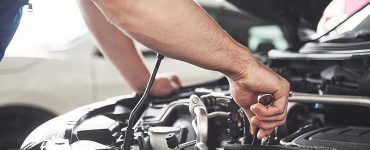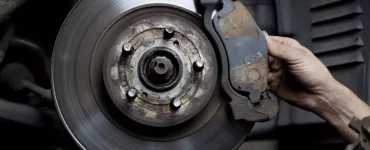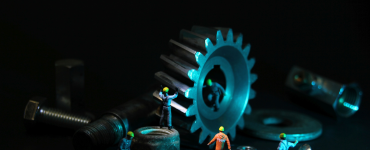What Impacts Car Repair Costs: Key Factors
Keeping your vehicle properly maintained and repaired is essential for safety and reliability. But with car repair costs rising well above inflation lately, these expenses take a major bite out of your budget. Understanding what influences automotive service and repair costs allows creation of realistic maintenance budgets and minimizing bill shock.
This article explores the key variables that shape what you pay to have your car serviced and fixed. We’ll look at factors like labor rates, the impact of your vehicle’s age and mileage, the difference between basic maintenance and major repairs, and strategies for controlling expenses.
Armed with knowledge of what goes into generating your repair bill, you can make informed decisions to keep costs in check. Here are the essential factors affecting car repair costs to consider.

Shop Hourly Labor Rates
The hourly rate charged by mechanics to diagnose issues and perform repairs heavily influences the final tab. This labor rate accounts for the majority of your auto service bills.
Labor rates vary tremendously based on:
- Geographic area – Rates in big cities exceed small towns.
- Brand certifications – Dealerships charge more than independent shops.
- Technician skill level – Master technicians earn higher rates.
- Shop overhead – Facility costs get passed to customers.
When you receive a repair quote, understanding the hourly rate helps estimate the total cost. Inquire if there’s wiggle room in the rate being charged. Also ask about any shop fees for supplies, testing and disposal that might be tacked on.
Strategies for Controlling Labor Costs
Ways to minimize labor expenses when repairs are needed include:
- Asking about any warranty coverage on failed components – this cuts your out-of-pocket costs.
- Having the savvy and tools to DIY basic maintenance like brake pads and oil changes.
- Comparing labor rates between shops when possible to find the best value.
- Considering purchasing an extended warranty with higher mileage vehicles to limit fees.
Manufacturer List Pricing on OEM Parts
When repairs demand new replacement parts, the manufacturer’s list prices for components also drive your total bill. Dealerships tend to exclusively use new OEM parts that usually cost substantially more than aftermarket alternatives.
OEM part costs are driven by:
- Complexity of the component – Basic sensors cost less than major assemblies.
- Vehicle brand – Luxury and specialty vehicles parts often cost more.
- Manufacturing technology – Advanced systems components cost more.
See if remanufactured or used parts are available as less expensive substitutes when repairs requiring new OEM components come up.
Ways to Manage Part Costs
When you face major repairs, there are ways to potentially minimize part expenses:
- Asking the shop about using recycled or remanufactured components.
- Checking part pricing between shops for cheaper alternatives.
- Supplying your own components by shopping auto parts warehouses.
- Buying high quality aftermarket components with competitive pricing.
Vehicle Make, Model, and Age
The combination of your vehicle’s make and model along with its age and mileage also influences maintenance and repair costs substantially. Newer vehicles within warranty periods generally cost less overall to repair. But once out of warranty, expenses accumulate, especially as major systems like engines and transmissions wear out.
Accounting for Age and Accumulated Wear
To budget realistically, factor lifecycle stage into your savings goals:
- Late model vehicles may require fewer repairs, but costs for repairs out of warranty can be higher.
- As cars age over 10 years and 100,000 miles, increased maintenance and repairs should be expected. Budget accordingly.
- Prioritize repairs that impact safety and drivability. Delay cosmetic fixes and upgrades to conserve cash.
- For older vehicles, compare repair costs to replacement values when facing major repairs. At a certain point replacement becomes the economical option.
Routine Maintenance vs Major Repairs

Routine scheduled maintenance like oil changes, brake jobs and tire rotations costs far less than major unforeseen repairs. The costs accumulate but are manageable with proper budgeting. However infrequent repairs like a transmission rebuild often shock bank accounts.
Planning for Major Repairs
You can’t fully avoid surprise failures as cars age, but smart preparation helps cushion the financial hit:
- Build up an emergency fund to cover the inevitable big repair bills that will come along.
- Consider extended warranty coverage before the manufacturer warranty expires to limit major repair costs.
- When major repairs are recommended, get quotes from multiple shops to find the best pricing.
- Ask if used, remanufactured or aftermarket parts are available as lower cost options.
Final Thoughts on Controlling Car Repair Costs
With repair costs rising well above the rate of inflation, keeping your car running properly demands more budgeting diligence. But by understanding what factors shape pricing and shopping repairs carefully, you can minimize the ongoing expense of auto maintenance.
Focus on regular upkeep to preserve your vehicle as long as possible before major repairs become unavoidable. Seek multiple estimates, ask for alternative parts options, and don’t be afraid to negotiate respectfully with shops on labor rates. Every dollar counts.
Now armed with knowledge on what impacts car repair costs, you can make informed decisions to keep your vehicle going down the road safely without breaking the bank. Careful planning and diligent research helps ease the pain of maintenance bills.





[…] Brake Repair Costs and Pricing […]